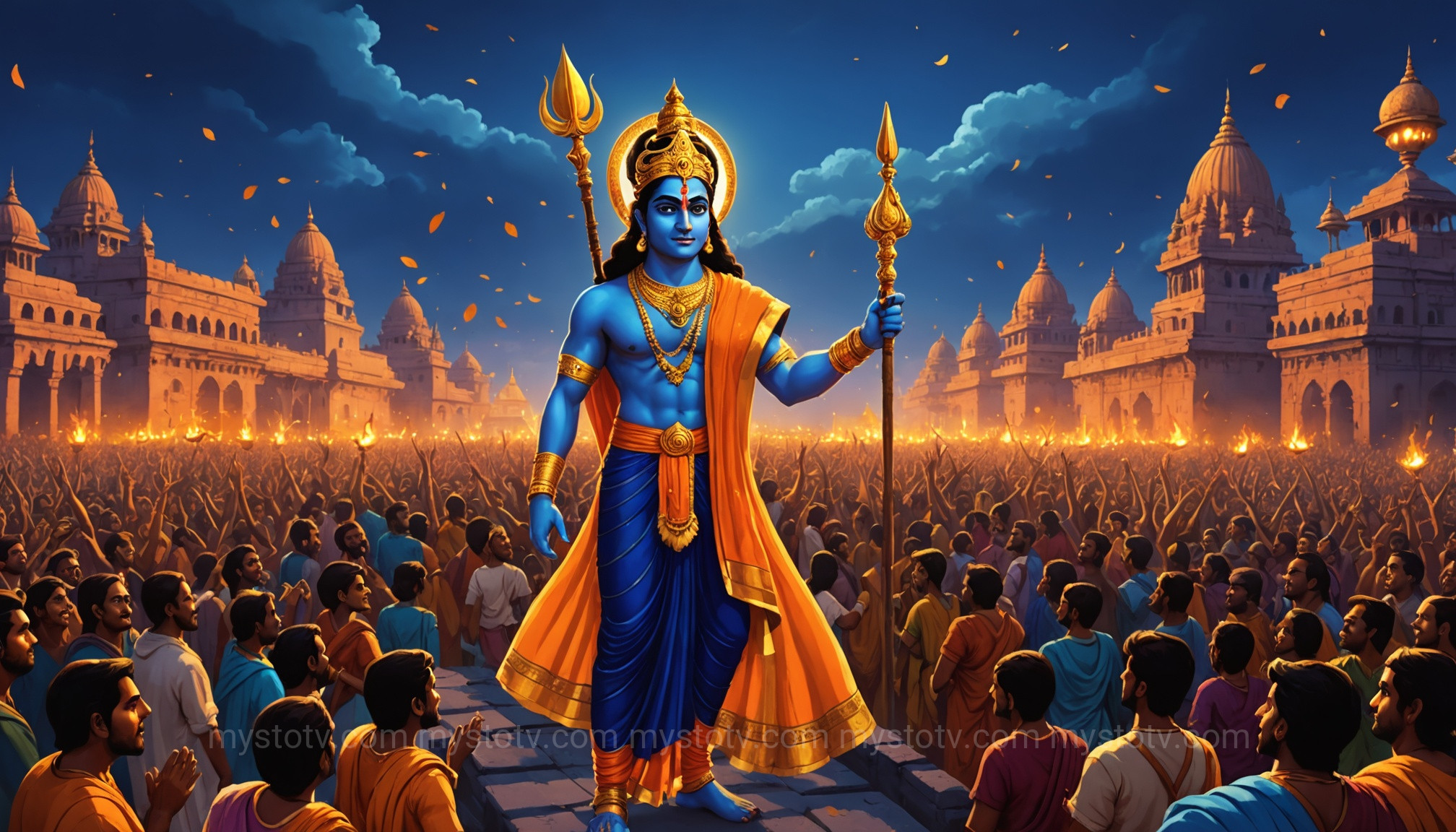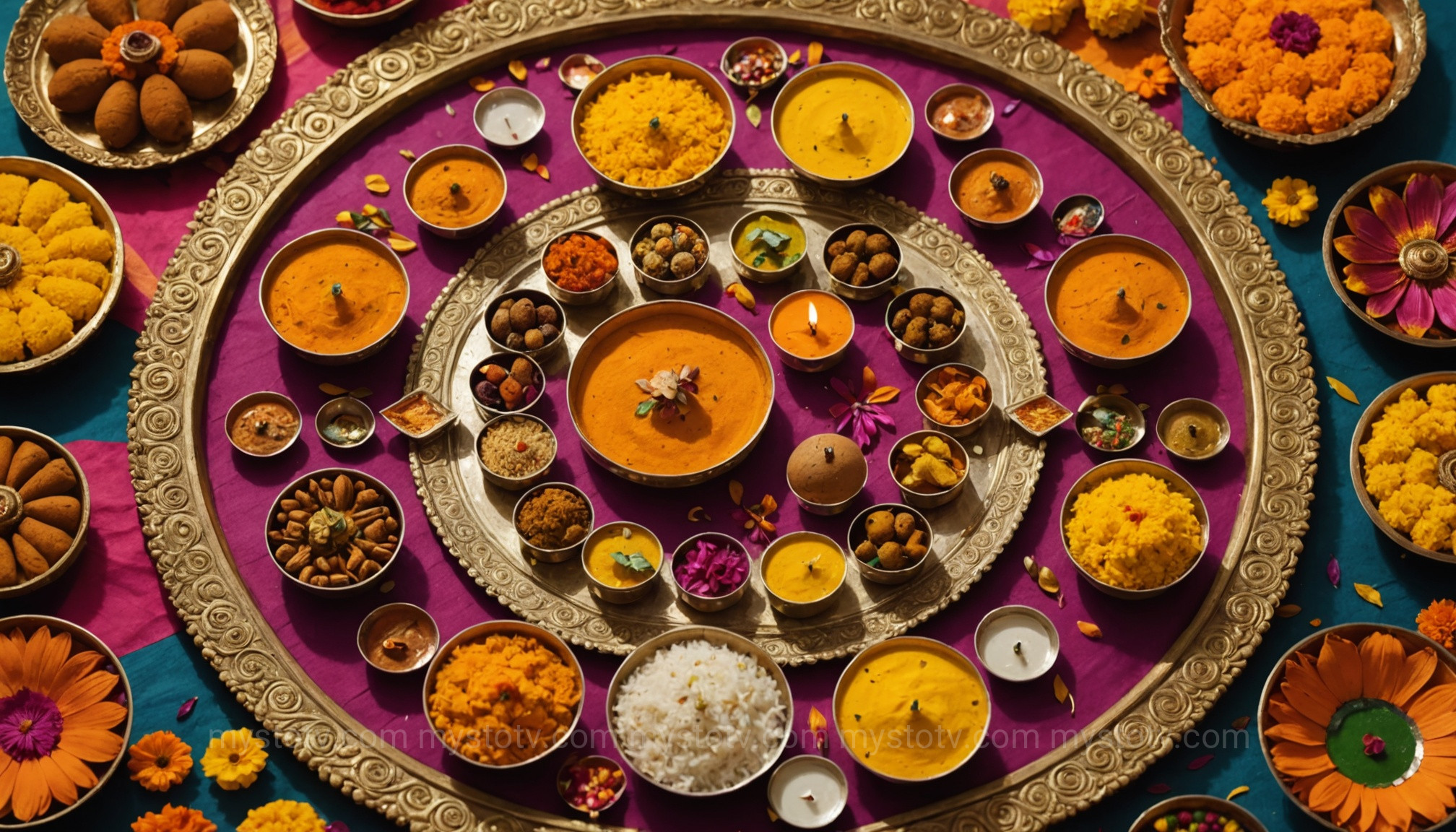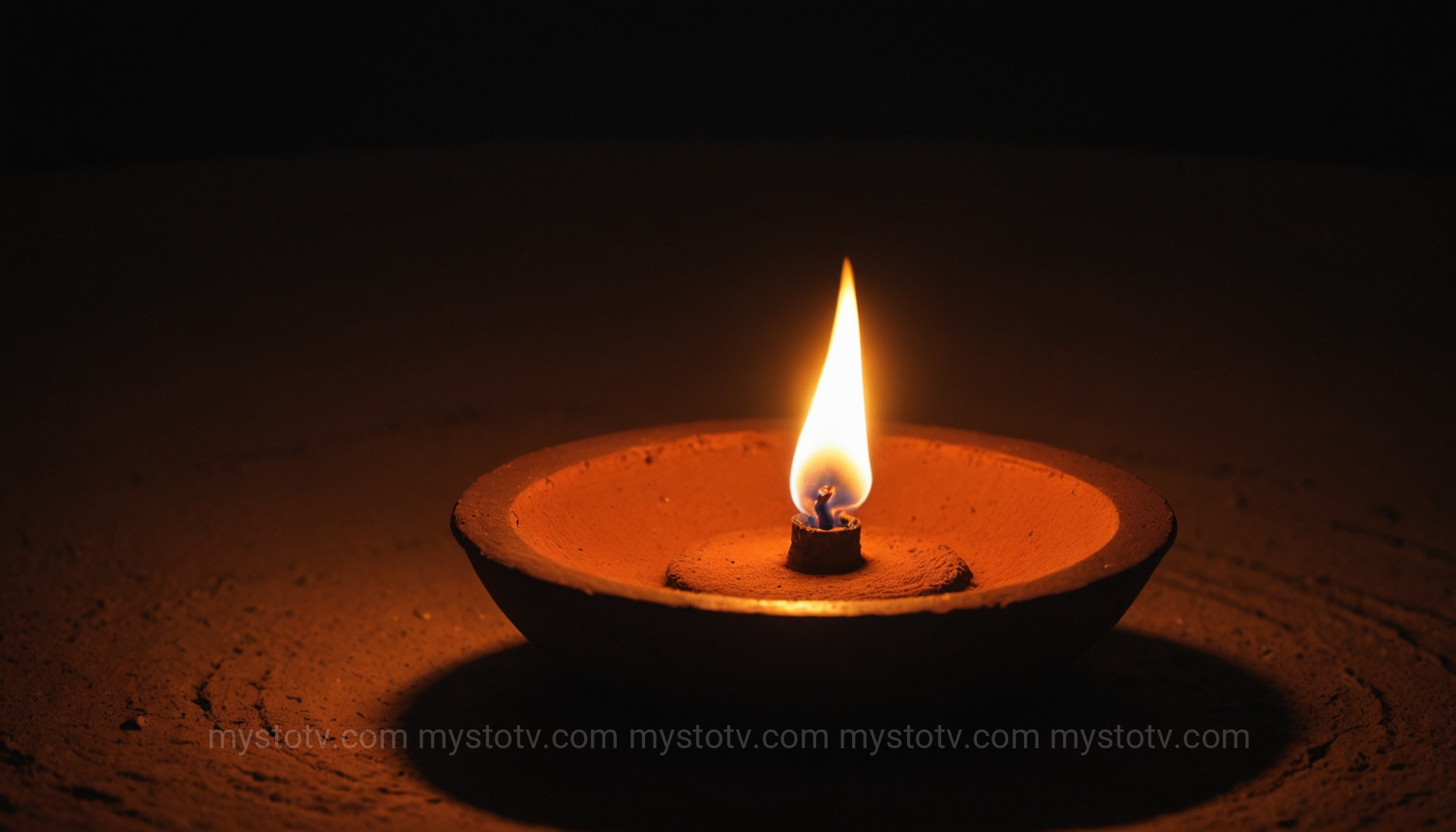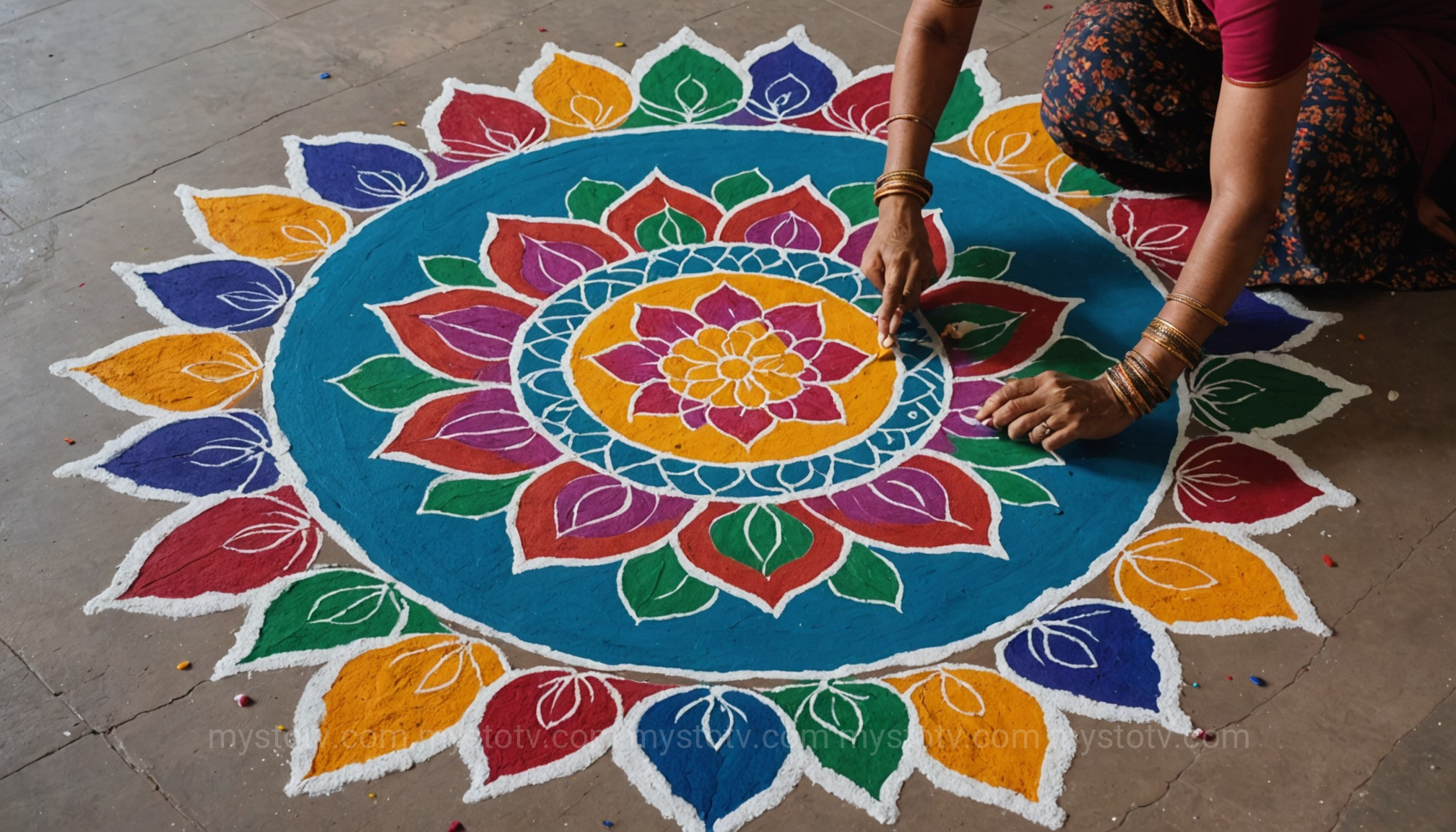Contents
- 1 The Historical Roots of the Diwali Festival: Legends of Light Overcoming Darkness
- 2 The Five-Day Celebration of the Diwali Festival: A Ritualistic Journey
- 3 The Symbolism of Light in the Diwali Festival: Illuminating the Path to Righteousness
- 4 Cultural and Social Significance of the Diwali Festival: Uniting Communities in Joy
- 5 The Modern Diwali Festival: Navigating Traditions and Contemporary Challenges
- 6 FAQ About the Diwali Festival
- 7 References
The Historical Roots of the Diwali Festival: Legends of Light Overcoming Darkness
The profound significance of the Diwali festival is anchored in a rich tapestry of mythology and history, with narratives that span different eras and regions of India. These stories are not mere fables; they are the foundational pillars that give the festival its deep-seated meaning. Each legend, in its unique way, powerfully illustrates the core theme of righteousness prevailing over wickedness, light banishing ignorance, and hope conquering despair. Understanding these tales is essential to grasping why Diwali is more than just a celebration; it's a spiritual and moral renewal.
The Return of Lord Rama to Ayodhya

Perhaps the most widely recognized story associated with the Diwali festival is the return of Lord Rama to his kingdom of Ayodhya. This epic tale is chronicled in the Hindu scripture, the Ramayana. After a 14-year exile and a monumental battle, Lord Rama, an incarnation of the god Vishnu, defeated the ten-headed demon king Ravana, who had abducted his wife, Sita. The victory of Rama over Ravana is a classic representation of good conquering evil.
The celebration of Diwali marks the night Lord Rama, along with Sita and his loyal brother Lakshmana, returned to their capital. To welcome their beloved king and to illuminate his path in the darkness, the people of Ayodhya lit rows (avali) of clay lamps (deepa). This act of lighting lamps, known as Deepavali, gave the festival its name. It symbolizes the dispelling of the darkness of evil and ignorance by the light of goodness and divine wisdom that Rama represents.
Analytical Interpretation: The return of Rama is not just a historical victory; it's a metaphor for the return of order, righteousness (dharma), and prosperity to a land plagued by chaos and adharma. The physical darkness of the new moon night (Amavasya) on which Diwali falls is symbolically overcome by the collective light of the community, representing a unified stand against the metaphorical darkness of evil.
The Slaying of Narakasura by Lord Krishna
In another significant legend, particularly prevalent in South India and parts of eastern India, the Diwali festival commemorates the victory of Lord Krishna over the demon king Narakasura. Narakasura had terrorized the three worlds, imprisoning 16,000 celestial princesses and stealing the precious earrings of Aditi, the mother of the gods. Unable to bear his tyranny, the gods appealed to Lord Krishna for help.
Krishna, accompanied by his wife Satyabhama, waged a fierce battle and ultimately vanquished the demon, freeing the princesses and restoring order. This victory occurred on the day before the main Diwali day, which is celebrated as Naraka Chaturdasi or 'Choti Diwali' (Little Diwali). The celebration involves bursting firecrackers to signify the defeat of the demon and taking a ritualistic bath before sunrise, which is believed to be as pure as bathing in the holy Ganges.
Analytical Interpretation: This story emphasizes a different facet of the "good over evil" theme. Narakasura represents the ego, greed, and lust that imprison the soul (symbolized by the 16,000 princesses). Krishna's victory is the triumph of the divine self over the corrupted ego. The pre-dawn bath signifies the cleansing of these inner impurities, preparing the individual for the spiritual illumination of the main Diwali day.
The Five-Day Celebration of the Diwali Festival: A Ritualistic Journey

The Diwali festival is not a single-day event but a grand five-day affair, with each day holding its own unique significance and rituals. This structured celebration guides the devotee and the community through a progressive journey, starting with material prosperity and culminating in familial bonds, all under the umbrella of light's victory over darkness. Each day reinforces the central theme in a practical, participatory way.
Day 1: Dhanteras: Celebrating Wealth and Prosperity
The festivities begin with Dhanteras. The name is a combination of Dhan (wealth) and Teras (the 13th day of the lunar cycle). On this day, it is considered highly auspicious to purchase new utensils, gold, or silver. This act symbolizes the welcoming of wealth and prosperity into the home. In the evening, devotees worship Lord Dhanvantari, the physician of the gods and an incarnation of Vishnu, who is believed to have emerged from the cosmic ocean with the pot of elixir (Amrita). Lighting a lamp for Yama, the god of death, is also a key ritual, done to ward off untimely death.
Analytical Interpretation: Dhanteras connects the triumph of good to well-being and prosperity. It acknowledges that for righteousness to flourish, a foundation of health and material stability is essential. Worshipping Dhanvantari is a prayer for physical health, while purchasing precious metals is an invocation of Goddess Lakshmi, the goddess of wealth, who is the central deity of the main Diwali festival day.
Day 2: Naraka Chaturdasi: The Cleansing of Evil
As discussed earlier, this day, also known as Choti Diwali, celebrates Lord Krishna's victory over Narakasura. The primary ritual is the pre-dawn bath with aromatic oils and a special paste called ubtan. This is a symbolic act of purification, washing away the sins and impurities of the past year. Small-scale lighting of lamps and bursting of a few firecrackers herald the main event to come.
Analytical Interpretation: Naraka Chaturdasi is a day of personal preparation. It embodies the idea that to welcome the divine light of goodness (Lakshmi), one must first cleanse oneself of internal evils and negativity (Narakasura). It is a spiritual scrubbing, making the soul a worthy vessel for the blessings to come.
Day 3: Lakshmi Puja: The Pinnacle of the Diwali Festival
This is the main day of the Diwali festival, falling on the new moon night (Amavasya). Homes are meticulously cleaned and decorated with lights, flowers, and intricate rangoli patterns on the floor to welcome Goddess Lakshmi. In the evening, families gather to perform the Lakshmi Puja, a detailed ritual worshipping the goddess of wealth, fortune, and prosperity. Lord Ganesha, the remover of obstacles, is also worshipped alongside her. After the puja, lamps are lit in every corner of the house, and the sky erupts in a spectacular display of fireworks.
Analytical Interpretation: This day is the climax of the festival's theme. The pitch-black new moon night represents the zenith of darkness and ignorance. The act of lighting countless lamps is a powerful, collective defiance of this darkness. The worship of Lakshmi isn't just for material wealth but for spiritual prosperity, wisdom, and good fortune—the true "wealth" that constitutes a good life. The celebration is a community's declaration that light and goodness will always prevail.
Day 4: Govardhan Puja: Honoring Nature and Divine Protection
The fourth day commemorates another tale of Lord Krishna. According to the Bhagavata Purana, Krishna lifted the Govardhan Hill on his little finger to protect the villagers of Vrindavan from the torrential rains sent by an enraged Lord Indra, the king of heaven. To celebrate this, devotees create a small hillock, often out of cow dung or food, and worship it. An 'Annakut' (mountain of food) is prepared, offering a vast array of dishes to the deity, which are later distributed as prasad (blessed food).
Analytical Interpretation: Govardhan Puja shifts the focus to the triumph of devotion over ego (Krishna's simple devotion over Indra's powerful ego) and highlights the importance of nature. It serves as a reminder that true good lies in humility, faith, and living in harmony with the environment, which protects and provides for all.
Day 5: Bhai Dooj: Celebrating the Sibling Bond
The final day of the Diwali festival celebrates the sacred bond between brothers and sisters. Sisters apply a tilak (a mark on the forehead) to their brothers, pray for their long life and prosperity, and share a meal. In return, brothers offer gifts and promise to protect their sisters. The legend behind this day involves Yama, the god of death, visiting his sister, the river Yamuna, who welcomed him with an elaborate ceremony.
Analytical Interpretation: Bhai Dooj concludes the festival by grounding the grand theme of "good over evil" in the most intimate of human relationships: the family. It signifies that the triumph of good is not an abstract concept but is manifested and sustained through love, care, and mutual respect within the community, starting with the family unit.
The Symbolism of Light in the Diwali Festival: Illuminating the Path to Righteousness

The most iconic element of the Diwali festival is, without question, the light. From the humble clay diya to the dazzling fireworks, light is the central motif that weaves through every ritual and story. This light operates on multiple symbolic levels, representing not just the absence of physical darkness but the illumination of the human spirit and the victory of knowledge over ignorance, a core tenet of Hindu philosophy.
The Diya: A Symbol of the Inner Light
The simple earthen lamp, or diya, is the most potent symbol of the Diwali festival. Its lighting signifies the awakening of the inner light (the Atman or soul) within each individual. Just as the flame of the diya dispels external darkness, the light of self-realization is believed to dispel the internal darkness of ignorance, greed, jealousy, and ego. The collective lighting of millions of diyas represents the interconnectedness of all beings and the shared human quest for enlightenment and truth. It is a visual prayer, a collective beacon of hope and purity.
Analytical Interpretation: The victory of good over evil, in this context, is an internal battle. Diwali encourages introspection. Lighting the diya is a commitment to nurturing one's own positive qualities and to let that inner goodness shine forth to illuminate the world. It’s a reminder that the greatest battles are fought and won within the self.
Fireworks: Celebrating Victory and Warding Off Evil
While the modern use of fireworks is a subject of environmental debate, their traditional symbolism is tied to both celebration and protection. The loud sounds and bright lights were believed to ward off evil spirits and announce the triumph of the gods to all corners of the heavens and earth. They are an exuberant expression of joy and relief, marking the defeat of forces like Ravana and Narakasura. The spectacular display in the sky mirrors the celestial celebrations that were said to have occurred after these divine victories.
Analytical Interpretation: The fireworks represent a joyous, loud, and public declaration of faith. They externalize the inner joy felt by the community, turning the abstract concept of victory into a tangible, sensory experience. It's a way for the community to collectively participate in the gods' triumph, reinforcing social bonds and shared beliefs.
Rangoli: The Artistic Welcome

Rangoli are intricate patterns created on floors using colored rice, powder, sand, or flower petals. These beautiful, often geometric or floral designs are not merely decorative. They are considered a sacred way of welcoming deities, particularly Goddess Lakshmi, into the home. The creation of a rangoli is a form of meditation, and its ephemeral nature—meant to be swept away the next day—teaches a lesson in non-attachment.
Analytical Interpretation: Rangoli symbolizes the beauty, harmony, and order that comes with a life of goodness. Its creation requires focus, creativity, and patience—qualities associated with a virtuous mind. By creating a beautiful and welcoming space, the household signals its readiness to receive divine grace, further underscoring the idea that goodness attracts positive spiritual energy.
Cultural and Social Significance of the Diwali Festival: Uniting Communities in Joy
Beyond its deep religious and spiritual meanings, the Diwali festival is a powerful social phenomenon. It transcends religious and regional boundaries, acting as a great unifier. It's a time for cleaning and renewing not just homes, but also relationships. The spirit of the festival encourages forgiveness, generosity, and the strengthening of community bonds, making it a true celebration of life and human connection.
The festival's message of good triumphing over evil is universally resonant. This is why, in addition to Hindus, the Diwali festival is also celebrated by Jains (commemorating the enlightenment of Lord Mahavira) and Sikhs (celebrating Bandi Chhor Divas, the day Guru Hargobind was released from prison). It has also become a global event, celebrated by the Indian diaspora and embraced by other cultures worldwide, with major celebrations held in cities like London, Toronto, and Singapore. This global embrace showcases the universal appeal of its core message of light, hope, and new beginnings.
Analytical Interpretation: The social aspect of Diwali is where the "triumph of good" becomes a lived reality. By sharing food, exchanging gifts, and visiting family and friends, people actively practice the virtues of generosity, love, and fellowship. The festival provides a dedicated time to mend broken ties and start afresh, ensuring that the "good" in society—harmony, unity, and mutual respect—triumphs over the "evil" of discord, division, and enmity.
In the 21st century, the celebration of the Diwali festival faces new contexts and challenges. While the core spirit remains, its expression has evolved. Commercialization has led to extravagant spending on gifts and decorations, sometimes overshadowing the festival's spiritual essence. More significantly, the extensive use of firecrackers has raised serious environmental and health concerns due to air and noise pollution, prompting calls for more eco-friendly celebrations.
This has led to a growing movement towards "Green Diwali," which encourages the use of traditional earthen diyas over electric lights, creating homemade sweets, and opting for community fireworks displays or forgoing them altogether. This modern reinterpretation is, in itself, a reflection of the festival's central theme.
Analytical Interpretation: The contemporary challenges surrounding the Diwali festival present a new battleground for "good versus evil." In this context, "good" can be interpreted as sustainability, mindfulness, and health, while "evil" can be seen as pollution, consumerism, and mindlessness. The push for a Green Diwali is an effort to ensure the celebration itself does not cause harm, aligning the festival's practices with its core message. It is a modern-day triumph of good—conscious celebration—over the unintended evil of environmental degradation. This journey of reinterpretation reflects the festival's resilience.
FAQ About the Diwali Festival
- 1. What is the most important day of the five-day Diwali festival?
- The third day, which features the Lakshmi Puja, is considered the most significant day of the Diwali festival. It falls on the new moon (Amavasya) and is the day when the main rituals of lighting lamps, worshipping Goddess Lakshmi for prosperity and well-being, and celebrating with fireworks take place. It is the culmination of the spiritual preparations of the preceding two days.
- 2. Is the Diwali festival only a Hindu celebration?
- While it is most prominently a Hindu festival, its message and timing coincide with important events for other faiths. Jains celebrate it as the day Lord Mahavira attained moksha (liberation). Sikhs celebrate Bandi Chhor Divas, marking the release of their sixth guru, Guru Hargobind, from prison. Its universal themes of light over darkness and new beginnings have made it a cross-cultural celebration in India and across the globe.
- 3. What are some traditional foods eaten during the Diwali festival?
- Food is central to the celebration. Sweets, known as 'mithai,' are paramount. Popular examples include ladoos (sweet flour balls), barfi (a dense milk-based sweet), jalebi (deep-fried batter soaked in syrup), and gulab jamun (milk solids soaked in syrup). Savory snacks like samosas and pakoras are also common. Each family and region has its own specialties, which are shared with guests and neighbors as a sign of goodwill.
- 4. How can one celebrate an eco-friendly Diwali festival?
- Celebrating an eco-friendly or "Green Diwali" is becoming increasingly popular. You can do this by using traditional, reusable earthen diyas instead of plastic electric lights, creating natural rangoli with flowers and rice flour instead of synthetic colors, wrapping gifts in newspaper or cloth, and, most importantly, avoiding personal firecrackers. You can instead opt for community fireworks displays or light sparklers and flower pots, which cause relatively less pollution.
References
- Fuller, C. J. (2004). The Camphor Flame: Popular Hinduism and Society in India. Princeton University Press. https://press.princeton.edu/books/paperback/9780691120485/the-camphor-flame
- Lochtefeld, James G. (2002). The Illustrated Encyclopedia of Hinduism: N-Z. The Rosen Publishing Group. ISBN 978-0-8239-3180-4.
- Pintchman, Tracy. (2005). Guests at God's Wedding: Celebrating Kartik among the Women of Benares. State University of New York Press. ISBN 978-0-7914-6595-0.
- Britannica, The Editors of Encyclopaedia. "Diwali". Encyclopedia Britannica, 20 Oct. 2023. https://www.britannica.com/topic/Diwali-Hindu-festival
In conclusion, the diwali festival is far more than a mere holiday marked by lights and sounds. It is a profound, multi-layered narrative of hope, renewal, and the enduring power of righteousness. From the ancient legends of Rama and Krishna to the personal act of lighting a single diya, the festival reinforces the message that darkness—be it ignorance, evil, or despair—is ultimately transient. It is a celebration that teaches us to find and nurture the light within ourselves, to cleanse our spirits, to cherish our relationships, and to unite as a community in the joyous, unwavering belief that good will always, and unequivocally, triumph.